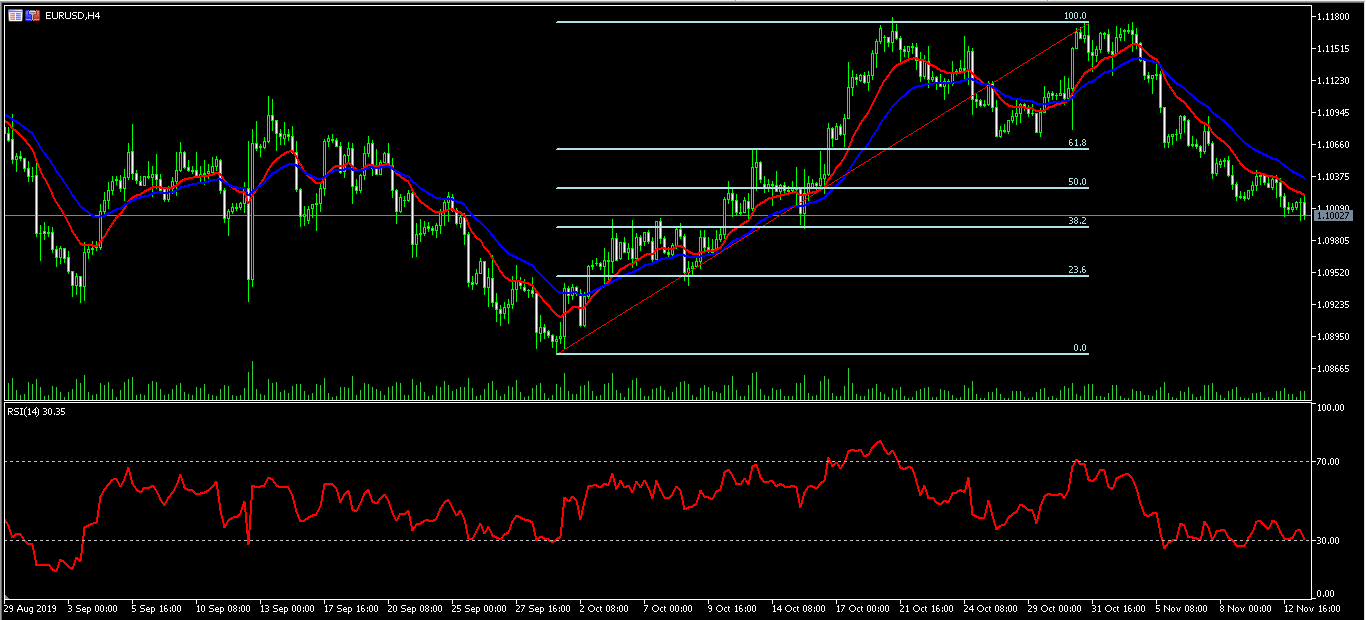The New Zealand dollar soared today after the country’s central bank left interest rates unchanged at 1.00%. The market was expecting a 25-basis point cut. In the accompanying statement, the country’s central bank said it believed that the previous rate cut was having a positive impact on the economy. It also reiterated that a rate cut was not needed for now. Still, officials warned that the country’s trading partners were experiencing slow growth which could have negative implications for the economy. Governor Orr will address the press later today.
The sterling declined slightly after the Office of National Statistics (ONS) released the inflation number for the month of October. The CPI increased by an annualized rate of 1.5%, which was lower than September’s 1.7%. On a MoM basis, the CPI contracted by -0.2%. The core CPI, which removes the volatile food and energy products remained unchanged at 1.7%. It declined by 0.1% on a MoM basis. Meanwhile, retail prices declined from 2.4% to 2.1% while PPI input declined by -5.1%. PPI output rose by 0.8%. With inflation at a three-year low, the Bank of England has said that it would be prepared to slash interest rates. The data also comes at a time when the country is in an election mood.
The euro was relatively unchanged against the USD after the region released the industrial production data for September. Numbers showed that industrial production increased slightly during the month. On a MoM basis, production rose by 0.1% from the previous 0.4%. It declined by -1.7% on an annualized basis. This was better than the consensus estimates of -2.8%. This output was boosted by domestic-oriented consumer goods companies. These include food and beverages and non-durable consumer goods. Export-oriented industries like motor vehicles, intermediate goods, and energy continued to suffer. This was the second month of improvements.
The USD was relatively unchanged after the market received important inflation data. In October, consumer prices rose by 1.8%. This was higher than the previous 1.7%. On a MoM basis, the CPI increased by 0.4%, up from the previous 0.1%. The core CPI rose by 2.3%. This was lower than the previous 2.4%. Later today, the market will listen to Jerome Powell, who will be testifying in congress.
NZD/USD
The NZD/USD pair rose today after the RBNZ released its interest rates decision. The pair rose from a low of 0.6325 to a high of 0.6417. This was slightly higher than the 61.8% Fibonacci Retracement level on the hourly chart. The Bollinger Bands have widened while the average true range has soared. This is an indication of increased volatility. There is a likelihood that the pair will see some movements when Governor Orr delivers his remarks.
EUR/GBP
The EUR/GBP pair struggled for direction after the weak inflation data from the UK and better-than-expected data from the EU. The pair is trading at 0.8575. This is slightly higher than the weekly low of 0.8557. On the hourly chart, the price is along the upper line of the Bollinger Bands. The RSI has remained on the neutral level of about 50. The chart shows that there is some indecision, which is leading to some resistance. This means that the pair may break out in either direction.
EUR/USD
The EUR/USD pair declined slightly after the US released its inflation numbers for October. The pair dropped to a low of 1.1005. On the four-hour chart, the price is slightly above the 38.2% Fibonacci Retracement level. The price is slightly below the 14-day and 28-day moving averages. The price is along the oversold level of 30. The pair will likely remain along this level as the market waits for Jerome Powell’s speech in congress.
General Risk Warning for FX & CFD Trading. FX & CFDs are leveraged products. Trading in FX & CFDs related to foreign exchange, commodities, financial indices and other underlying variables, carry a high level of risk and can result in the loss of all of your investment. As such, FX & CFDs may not be appropriate for all investors. You should not invest money that you cannot afford to lose. Before deciding to trade, you should become aware of all the risks associated with FX & CFD trading, and seek advice from an independent and suitably licensed financial advisor. Under no circumstances shall we have any liability to any person or entity for (a) any loss or damage in whole or part caused by, resulting from, or relating to any transactions related to FX or CFDs or (b) any direct, indirect, special, consequential or incidental damages whatsoever.
Recommended Content
Editors’ Picks
AUD/USD risks a deeper drop in the short term

AUD/USD rapidly left behind Wednesday’s decent advance and resumed its downward trend on the back of the intense buying pressure in the greenback, while mixed results from the domestic labour market report failed to lend support to AUD.
EUR/USD leaves the door open to a decline to 1.0600

A decent comeback in the Greenback lured sellers back into the market, motivating EUR/USD to give away the earlier advance to weekly tops around 1.0690 and shift its attention to a potential revisit of the 1.0600 neighbourhood instead.
Gold is closely monitoring geopolitics

Gold trades in positive territory above $2,380 on Thursday. Although the benchmark 10-year US Treasury bond yield holds steady following upbeat US data, XAU/USD continues to stretch higher on growing fears over a deepening conflict in the Middle East.
Bitcoin price shows strength as IMF attests to spread and intensity of BTC transactions ahead of halving

Bitcoin (BTC) price is borderline strong and weak with the brunt of the weakness being felt by altcoins. Regarding strength, it continues to close above the $60,000 threshold for seven weeks in a row.
Is the Biden administration trying to destroy the Dollar?

Confidence in Western financial markets has already been shaken enough by the 20% devaluation of the dollar over the last few years. But now the European Commission wants to hand Ukraine $300 billion seized from Russia.


